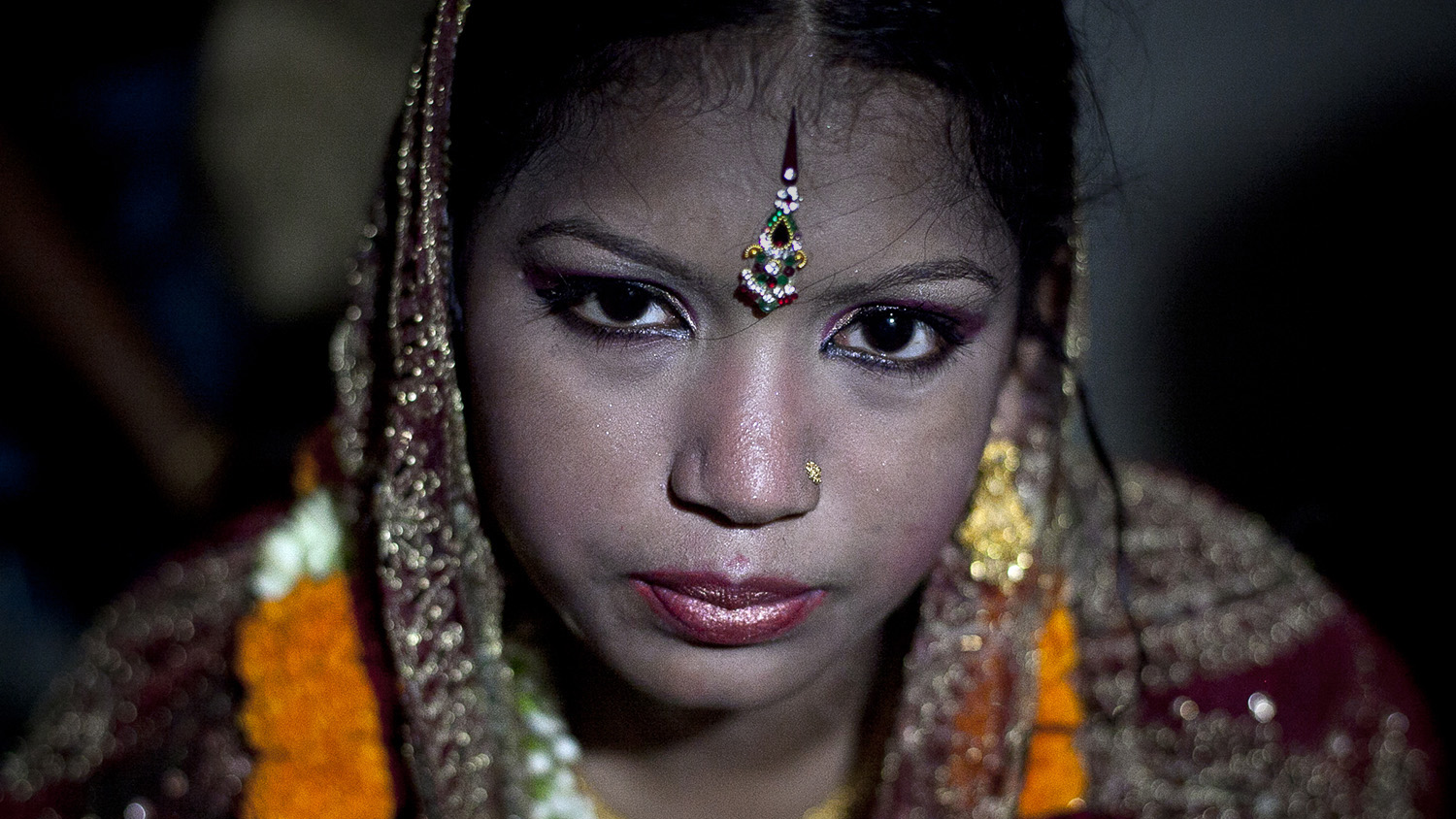Most Bangladeshi girls are forced to marry before they turn 18
Runa Akhter was only 13 when her parents forced her to marry a man more than twice her age.
Until then, Runa had dreamt of working as a receptionist. She was in 7th grade, loved reading and sports, and she wanted to wait until she was 21 to get married.
But her parents had other plans.

Runa gets dressed for her holud ceremony the night before her wedding.

Her mother, who helped arrange Runa’s marriage to Zahrul Haque Kajal, 29, believed that it would be harder to marry off Runa when she got older, and that people would ask too many questions if she stayed unmarried.
Runa’s marriage would protect her, her mother said.
“I told her husband to wear condoms until she’s a bit older.”


The final preparations before the holud ceremony.
Rape and sexual harassment are serious problems in Bangladesh, and child marriage is viewed both as a tradition and a way to protect young girls. Since they won’t go to school after their marriage, it reduces the risk of being harassed (or worse) during their commute.


Girls dance during the holud ceremony the night before Runa’s wedding.
Bangladesh has the fourth-highest rate of child marriage worldwide after Niger, the Central African Republic and Chad. Almost a third of the country’s girls marry before they turn 15, and almost two-thirds marry before their 18th birthday, even though the minimum legal age of marriage in Bangladesh is 18 for women and 21 for men.
The consequences of getting married early are dramatic. Most girls drop out of school, and if they get pregnant before they turn 15, they are five times more likely to die in childbirth than those 20 or older.

Runa takes a bath on the morning of her wedding.
I spent two days with Runa, during the ceremony before hand and on her wedding day.
She seemed to switch between the light moods of a 13-year-old girl, playing with her friends and her sister, to sudden dark clouds of sadness. She would abruptly withdraw as if remembering that her childhood would soon be gone and that she was about to become a wife with adult responsibilities.

Runa has her makeup done by her friends for the wedding.

29 year old Zahrul Haque Kajal arrives to his wedding.

Runa cries as she is led to her new husband.
It was troubling to bear witness to — especially when I thought of my own long, happy childhood.
To watch this girl have her life, her potential and her future ripped away from her was as heartbreaking as it was infuriating.

Source: Mashable










